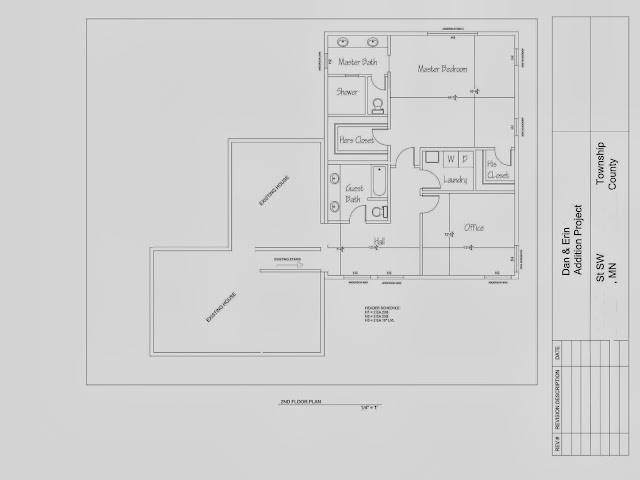This picture is just before all the digging began.
First, they dug a trench for the 4" PVC drain pipe from the house to the tank which is about 100 feet away. Then, they dug a huge hole for the tank. The tank itself is about 5' in depth, buried about 4' underground, so the hole was 8' deep.
The tank was delivered on a large boom truck, manufactured locally at Wieser Precast. This tank is 2250 gallons and is made from concrete. The sizing of tanks is dependent upon the number of bedrooms in your house and whether or not you have a garbage disposal. A garbage disposal increases the tank size by 750 gallons! This tank has a baffle in the middle. 1,500 gallons of the tank receives all the waste water from the house. As the water nears the top of the tank, it passes through a filter before pouring into the secondary tank. By the time the water passes into the secondary tank, all the solid material has settle out, leaving "grey water" as it is called. This secondary tank has a pump which pumps the liquid into the drain field periodically.
Here it is being lifted into place.
Here is the tank set into place, making the final connection to the PVC pipe from the house.
For serviceability, manhole type extension rings are added so that you can access the tank being the top of it is buried 4' or so. Here it is installed.
Then, everything was back filled leaving only the three lids showing.
Finally, the drainfield was constructed. It measures about 20' wide and 90' long and is made up of 4' of sand covered by 1' of dirt (FYI, that's a lot of sand! It took a whole day of driving the dump truck back and forth to the quarry for them to have enough)! Buried in the sand are three rows of baffles with PVC pipes inside. When the pump turns on to empty the septic tank, the effluent is dispersed into these lines where it is slowly absorbed back into the ground. Here you can see a fairly good cross section of the drain field as it is being buried.
And, there you have a septic system! I don't have a completed picture of the mound, but it is basically as the name implies - a large long mound of dirt!
That's it for now. Stay tuned to see the footing and foundation come to life!















